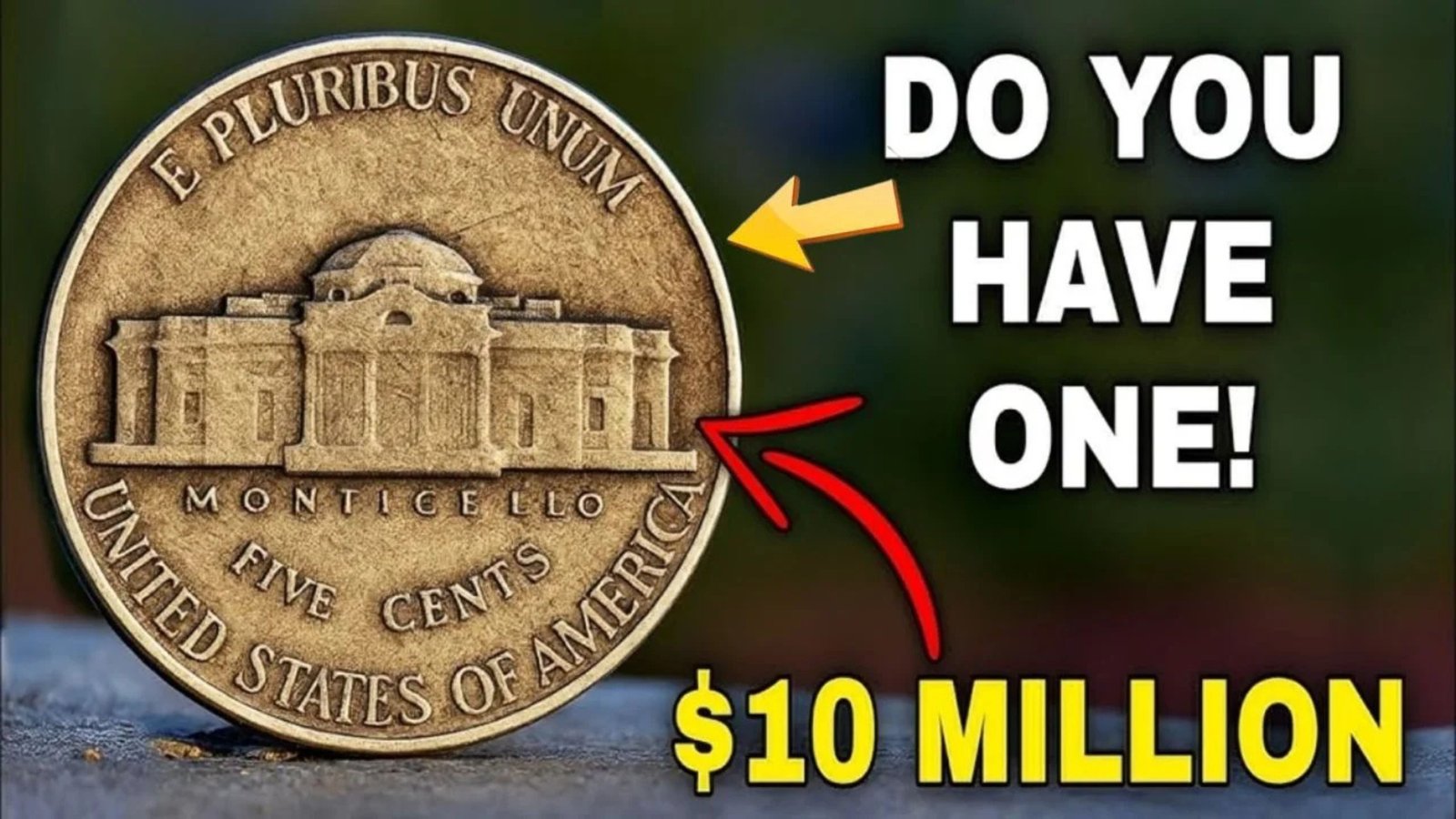War-Era Jefferson Nickel : In the vast world of numismatics, even the most ordinary-looking coins can hold extraordinary value. One such surprising example is the Jefferson nickel minted during World War II — a coin that once jingled in the pockets of soldiers and civilians alike, and now stands as one of America’s most valuable collectibles.
The Origins of the Jefferson Nickel
The Jefferson nickel was first introduced in 1938, replacing the beloved Buffalo nickel. Featuring Thomas Jefferson on the obverse and his Monticello estate on the reverse, it was designed by artist Felix Schlag. For the first few years, the coin was made of 75% copper and 25% nickel — a combination still used today, except during the critical war years.
Wartime Changes Lead to a Historic Coin
Between 1942 and 1945, the United States Mint altered the composition of the Jefferson nickel due to wartime needs. Nickel was a critical material for armor plating and other military equipment, so the Mint opted for a temporary formula: 35% silver, 56% copper, and 9% manganese. These coins are commonly referred to as “War Nickels.”
To distinguish them from the regular nickels, the Mint added a large mint mark above Monticello on the reverse — a unique feature found nowhere else in U.S. coinage. Notably, it was the first time the “P” mint mark (Philadelphia) appeared on U.S. coins.
What Makes One War Nickel Worth Thousands?
While most War Nickels are relatively common and sell for a few dollars due to their silver content, a select few are considered extremely rare and valuable. Here’s why:
1. Minting Errors
Some Jefferson War Nickels were struck with off-center designs, double dies, or on the wrong planchet (such as a penny blank). These minting errors drastically increase their value.
2. 1943/2-P Overdate Error
One of the most famous and sought-after Jefferson nickels is the 1943/2-P, a coin created when a 1942 die was mistakenly repunched with a 1943 date. The result is a visible “2” beneath the “3” in the date. High-grade examples of this error can fetch $10,000 or more at auction.
3. High-Grade or Full Step Specimens
Collectors prize coins with minimal wear and sharp detail. A War Nickel with “Full Steps” — sharply defined steps on Monticello — is especially valuable in uncirculated condition, as very few survive with perfect clarity due to the softness of the wartime alloy.
The Journey from Pocket Change to Priceless Treasure
The transformation of these coins from everyday currency to valuable collectibles reflects both their historical importance and scarcity. Many War Nickels were melted down after the war for their silver, and fewer still have survived in pristine condition.
In 2021, an MS-67 (Mint State) 1943/2-P War Nickel sold for over $17,000, highlighting how these humble coins have become sought-after treasures. What was once a five-cent piece used for war bonds or candy can now fund a college education.
How to Identify a War-Era Jefferson Nickel
If you’re curious whether you might have one of these historical coins in your collection, look for the following:
-
Date between 1942–1945
-
Large mint mark (P, D, or S) above Monticello on the reverse
-
Distinct silver-grey coloring
-
Weight of about 5 grams (lighter than standard copper-nickel coins)
-
Possible overdate errors or visible doubling
A Legacy in Your Pocket?
The War-Era Jefferson Nickel is more than just a collector’s item. It’s a tangible reminder of a time when the entire nation made sacrifices — even in coinage — to support the war effort. It represents resilience, innovation, and now, astonishing value.
Whether you’re a seasoned collector or someone sifting through spare change, keep an eye out. A war-era nickel could be hiding in plain sight — and its story might be worth far more than five cents.
War-Era Jefferson Nickel Frequently Asked Questions (FAQs.)
Q1: What is a War-Era Jefferson Nickel?
A: A War-Era Jefferson Nickel refers to nickels minted between 1942 and 1945 during World War II. These coins were made with a special wartime alloy of 35% silver, 56% copper, and 9% manganese, due to nickel being needed for military production.
Q2: How can I identify a War Nickel?
A: Key identifiers include:
-
A date between 1942 and 1945
-
A large mint mark (P, D, or S) above Monticello on the reverse
-
A silver-grey appearance (rather than the usual bright nickel color)
-
Weighs approximately 5 grams
Q3: Why were these nickels made of silver?
A: During WWII, nickel was a strategic material used in armor and weaponry. To conserve nickel for the war effort, the U.S. Mint changed the composition of nickels, substituting in silver and manganese.
Q4: Are all War Nickels valuable?
A: While most War Nickels are worth more than face value (typically $1–$3 due to silver content), only rare variations — such as the 1943/2-P overdate, high-grade examples, or mint errors — are worth hundreds or even thousands of dollars.
Q5: What is the 1943/2-P overdate error?
A: It’s a rare minting error where a 1942 die was repunched with the 1943 date, resulting in the number “2” faintly showing beneath the “3.” This coin is highly prized by collectors and can sell for $10,000 or more, depending on condition.
